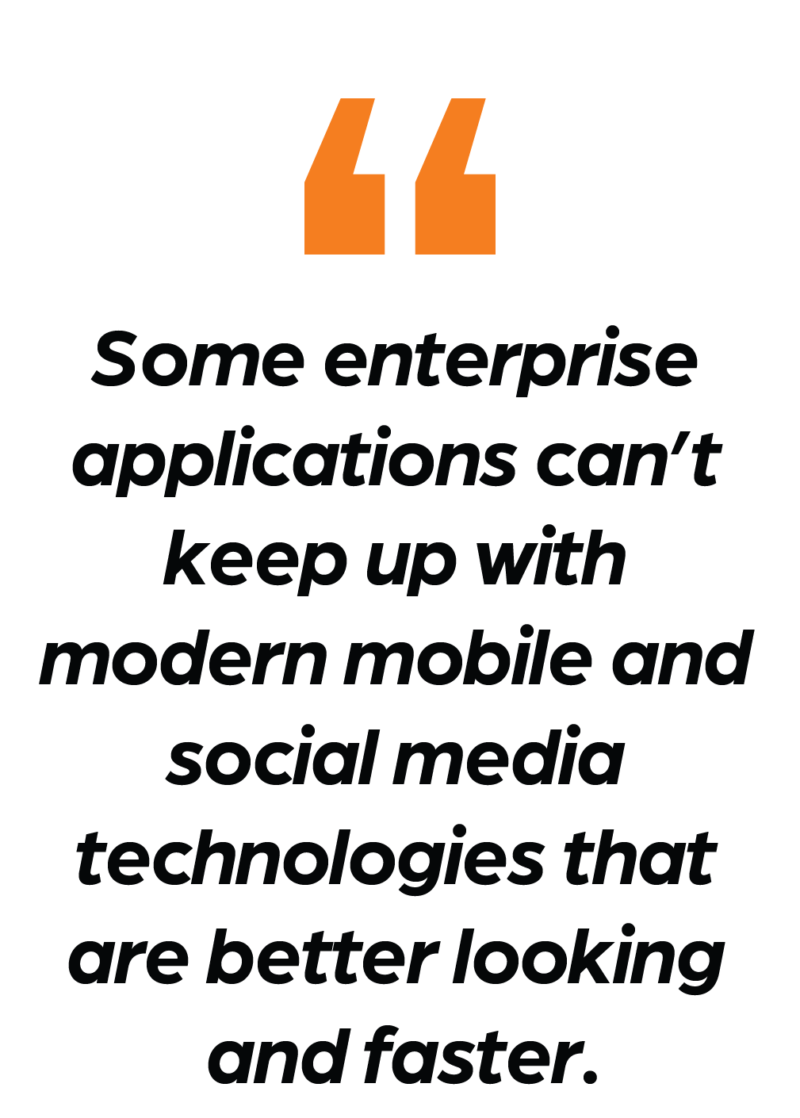Many business leaders planning the rollout of enterprise software worry the older generations among their internal teams will not adapt so well to the new technology. They perceive resistance to change and a desire to stick with the old way of doing things. Pencil and paper seem to be the tools of choice over notebooks, smartphones and other hand-held devices.
The younger generations, meanwhile, usually don’t warrant any concern. Digital technologies, the Internet and smartphones have been around for most, if not all, of their lives. Stick a device in their hands and watch them learn the new system on their own. They won’t need any training!
But surprisingly…our recent experiences with clients rolling out new software indicate the complete opposite is often true when it comes to training.
Going Against Training Paradigm Assumptions
Technology change has been rapid over the last 25 years. As a result, we have found that older- employees working for our clients have experience changing platforms and are often more attentive.
They not only want to learn new technology, but also want to understand all the capabilities. This helps them leverage the full functionality and play a contributing role in enabling the software to deliver its full value to the business.
In contrast, younger generations can get frustrated with enterprise software. Many are accustomed to mobile and social media apps that are relatively simple and meant to accomplish just a handful of processes. They don’t realize ERP, CRM, analytics, marketing automation, and other enterprise solutions require at least some customization. Some of the new enterprise applications can’t keep up with modern mobile and social media technologies that are better looking and faster. On top of this, there are often nuanced glitches that take time to iron out.

Training Use-Case Example
Consider the training scenario of a company with experienced and rookie field technicians who are asked to start using mobile devices to capture time, expenses, and service incident details. The veterans are accustomed to using paper forms to capture this information and are used to the delays in getting real-time data. They are likely to appreciate how new technology speeds things up and want to learn it to stay relevant in their jobs.
In contrast, the younger generation of technicians is used to having all the information they need in their personal lives at the click of a button. As a result, they get easily frustrated with the application taking a few more clicks and requiring knowing where to look for the right icon. From their perspective, this just takes too much time. They expect more from the application, and this is further aggravated in that office software can be buggy while phone apps tend to function flawlessly.
Solving the Challenge of Training Younger Generations
So, what can your company do about this trend the next time you roll out a new software solution?
First, educate your younger users on what to expect, and tailor their training program to go into more detail on how to use the application. You may be able to rely on the older generation’s ability to self-teach, but younger generations may need more formal instruction.
Then, make sure there are available resources for providing technical support when issues arise. And those resources should also be informed about the different approach each generation is likely to take in trying to get an enterprise application to do what they want it to do.
In this sense, your training programs should be a lot like your marketing programs. You want to take the persona of each audience member into account so that you create messaging and content that syncs with their style. And with both the younger and the older generations using your new solution correctly, you’ll be sure to derive the full value of your investment!
For more information on how to set up training programs for your younger and older generations, contact Tom at tom.ilic@atxadvisory.com or reach out to ATX Advisory Services.
Author: Tom Ilic